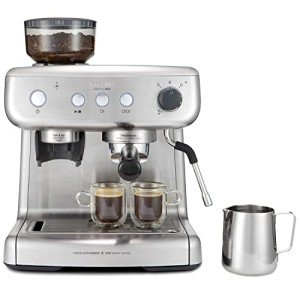The Ultimate Guide to Buying Espresso Coffee Machines
Espresso coffee machines have quickly end up being a staple in families and coffee shops all over the world. With their ability to produce abundant, focused coffee rapidly, numerous coffee fanatics choose brewing espresso at home rather than depending on coffee bar. Purchasing an espresso machine can be an overwhelming procedure, offered the myriad of alternatives available in the market. This article offers thorough insights into different types of espresso machines, key functions to consider, and ultimately helps hopeful home baristas make a notified decision.
Understanding Espresso Machines
There are several types of espresso machines, each designed for various user choices and requirements. Below is a table detailing the types of machines offered:
| Type | Description | Pros | Cons |
|---|---|---|---|
| Manual Machines | Operated by hand, allowing full control | Greater control & & quality Steeper knowing curve | |
| Semi-Automatic Machines | Combines manual operation with automated features | Flexibility and consistency | Requires more ability than fully automatic |
| Totally Automatic Machines | Automated brewing, making espresso with the push of a button | Convenience and consistency | Less control over the brewing process |
| Capsule Machines | Use pre-packaged capsules for developing | Extremely simple to use | Restricted range and greater long-term expense |
| Super-Automatic Machines | Totally automated processes consisting of grinding & & brewing | All-in-one convenience | More costly and less manual control |
Selecting the right machine mostly depends on the user's familiarity with coffee developing, wanted control level, and budget.
Key Features to Consider
When trying to find an espresso machine, a number of crucial functions must be taken into consideration:
- Pressure: Look for a machine that runs at a minimum of 9 bars of pressure, which is ideal for extracting espresso.
- Boiler System: Machines might come with single or dual boiler systems. Dual systems are thought about more flexible as they can brew espresso and steam milk at the same time.
- Milk Frothing Capability: For lattes and cappuccinos, a great steam wand or automatic milk frothing option is essential.
- Size and Design: Consider the available area in the kitchen. Bigger machines may provide more features however require more counter space.
- Ease of Cleaning: Look for machines with removable parts and easy-to-clean surface areas, as regular upkeep is crucial to durability.
- Modification Options: Some machines provide adjustable settings for temperature, volume, and strength. This feature is substantial for people who take pleasure in exploring with various flavors.
- Cost Range: Espresso machines can range from affordable to luxury models. Set a budget that reflects your usage frequency and priorities.
Budgeting for an Espresso Machine
Buying an espresso machine can differ extensively in cost. Single-Serve Espresso Machines is necessary to develop a budget that aligns with your coffee intake and choices. As a guide:
- Under ₤ 100: Entry-level pill machines and fundamental manual machines.
- ₤ 100 - ₤ 500: Good quality semi-automatic machines with more functions and better build quality.
- ₤ 500 - ₤ 1,500: Professional-level machines using sophisticated features, dual boilers, and boosted performance.
- ₤ 1,500 and above: High-end, commercial-grade machines developed for major enthusiasts and coffee shop owners.
Maintenance and Care
Proper maintenance extends the life of an espresso machine and protects the quality of the coffee. Here are some maintenance ideas:
- Regularly tidy the portafilter and other removable parts.
- Descale the machine at advised periods to prevent mineral accumulation.
- Rinse the steam wand after every use to eliminate milk residue.
- Check the water quality; using filtered water can considerably enhance the taste and reduce scale.
FAQs
1. What is the best type of espresso machine for novices?
For beginners, a semi-automatic espresso machine is frequently recommended, as it supplies a balance of control and user-friendliness.
2. Can Single-Serve Espresso Machines make latte art with any espresso machine?
You can make latte art with machines that have an excellent steam wand or automatic milk frothing abilities.
3. How typically should I descale my espresso machine?
You should descale your espresso machine every 3 to 6 months, depending on the firmness of your water and use frequency.
4. Is a more pricey machine worth the financial investment?
Normally, more pricey machines provide much better develop quality, consistency, and feature sets, which can improve the general coffee experience. Nevertheless, the worth is subjective to user requirements.
5. Do I require a grinder, or are there machines that consist of one?
Some super-automatic and high-end machines included built-in mills, while lower to mid-range models may need a different grinder for optimum espresso extraction.
Acquiring an espresso machine is an interesting financial investment for coffee enthusiasts and lovers. By understanding the numerous types, features, and key considerations included, potential buyers can find the best machine to suit their requirements. Whether it's the happiness of crafting the perfect shot of espresso or getting the capability to brew cafe-quality coffee at home, the ideal espresso machine can change the everyday coffee ritual into a delightful experience.

